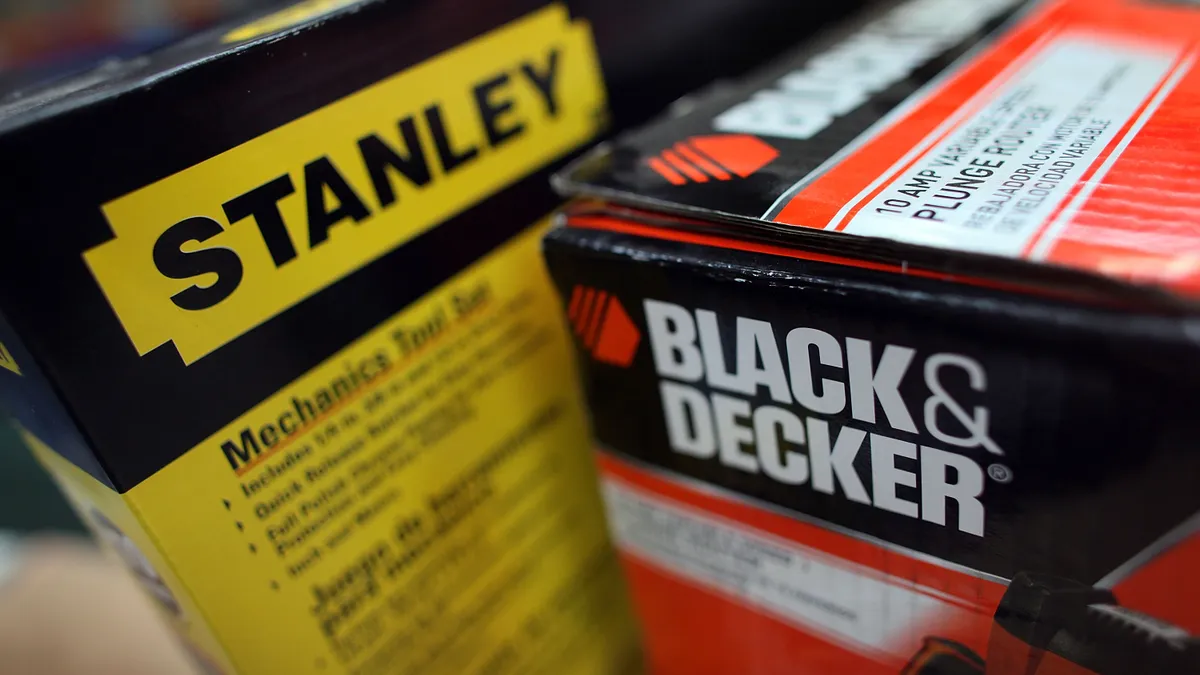Dive Brief:
- Stanley Black & Decker has cut nearly 50,000 SKUs as part of a supply chain transformation plan that’s expected to generate $500 million in savings by the end of next year, President and CEO Don Allan said on an Oct. 27 earnings call.
- The company has slashed roughly half of its targeted goal, with the remaining SKU reductions to occur through the end of 2023.
- The toolmaker also plans to consolidate facilities and optimize its distribution network with implementation to begin in 2023.
Dive Insight:
Stanley Black & Decker is well underway toward restructuring its supply chain to save costs within procurement and operations, according to Allan. The toolmaker expects to generate $1.5 billion in cost savings over the next three years by cutting SKUs, standardizing components and pursuing deeper relationships with suppliers.
The company also has a goal of slashing its operational footprint by at least 30% with a focus on driving incremental efficiencies across facilities, Allan said in Q2. A feasibility analysis has been completed and plans are being finalized, the CEO said on the most recent earnings call.
“We need to have a world-class and more agile supply chain that brings us closer to our customers, increases our flexibility in response to demand and enhances our customer service levels, all to drive greater growth for us and for our customers,” he said.
The toolmaker is also chasing savings with a decline in commodity prices. Allan noted that some commodity prices have dropped as much as 50% since April.
Despite its progress on transforming its supply chain, Stanley Black & Decker is still grappling with excess inventory levels and Allan noted that there’s still around $1.5 billion worth of product that needs to be liquidated. The company ended the quarter with $6.3 billion in inventory, down $290 million from Q2, according to the earnings report.
The toolmaker has extended curtailments in production as it looks to further cut inventory in Q4.
“We believe our focus on inventory reduction, cash generation and balance sheet health are prudent as we work in parallel on structural supply chain savings to improve our gross margins in 2023 and beyond,” said Interim CFO Corbin Walburger.
Editor's note: This story was first published in our Procurement Weekly newsletter. Sign up here.













